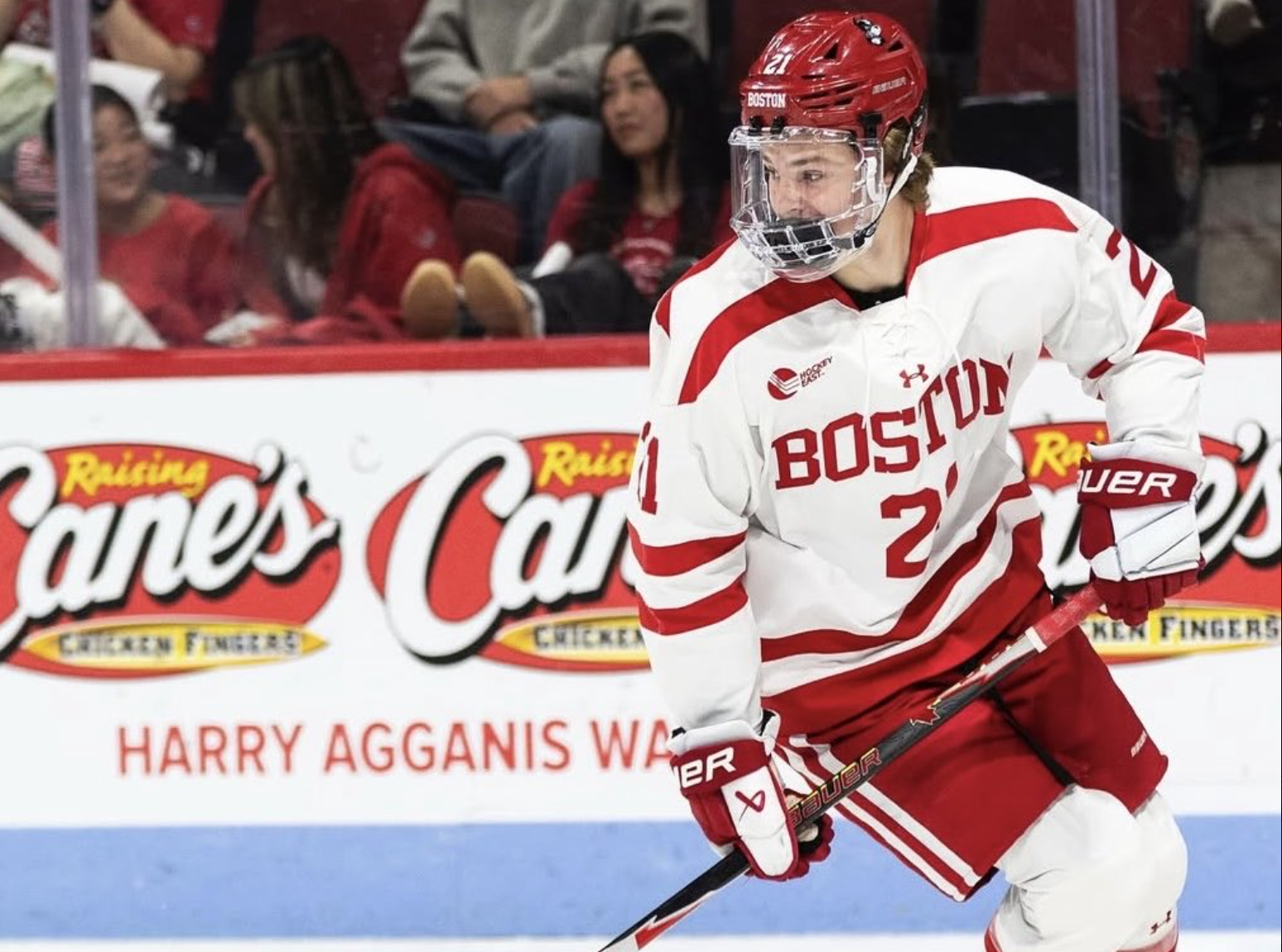
The arrival of Canadian junior league talent into the NCAA has been one of the most intriguing stories in the hockey world this season. The change has completely reshaped the development path for prospects, with several high-end junior players making the jump to the collegiate ranks.
It’s an entirely new frontier, and it will be fascinating to track whether former CHL players benefit from playing against more mature competition. While the most notable former CHL players are future top draft picks Gavin McKenna and Keaton Verhoeff, the Wild have a stake in the experiment in the form of Ryder Ritchie.
The Wild took Ritchie in the second round of the 2024 draft when he was with the WHL’s Prince Albert Raiders. He played the following season with the Medicine Hat Tigers and formed a potent connection with presumed future No. 1 overall pick Gavin McKenna.
Ritchie joined the exodus of junior talent to the NCAA when he committed to play at Boston University this season. Ritchie’s fit with BU seemed perfect for his development, and he has fully delivered on that promise in the early goings of the 2025-26 campaign.
While the season is still just getting started, Ritchie has proven he can produce offensively in Hockey East, where it’s tougher to score. In five games with Boston University, the forward has scored six points.
Much of the narrative surrounding his impressive numbers in Medicine Hat focused on his partnership with Gavin McKenna. While he’s still been productive, he’s mostly played on the top line with New York Islanders prospect Cole Eiserman and Chicago Blackhawks first-round pick Sacha Boisvert. It’s been encouraging that Ritchie is still putting up big offensive numbers away from McKenna.
Ritchie’s impressive start on the stat sheet only tells part of the story, though. It’s much more important to consider the process behind it. Why has Ritchie been so successful?
Let’s start with his most significant area of growth as a prospect. The word growth is literal in this sense, as the winger has put on a ton of size over the last several years. Ritchie was 6-foot-0, 175 pounds when the Wild drafted him. According to Boston University, he’s now 6-foot-2, 190 pounds.
Ritchie could still grow into his frame, but adding size has already benefited his game. His offensive instinct has always been one of his strengths. Ritchie always seems to find the soft spots on the ice to garner high-quality scoring chances. With his added stature, he’s added getting to the net to that slippery skill set.
The goal goes off his skate, but the critical part of the play is how effectively he gets to a dangerous position. Ritchie cycles from the side of the net to an open area in front that a preoccupied Michigan State defender leaves. His size allows him to be more confident going to that area of the ice, and he notches an easy goal for the effort.
Below is another example of Ritchie getting to the net, this time setting an excellent screen for a Terrier goal. These types of plays were much less common for the forward in previous seasons.
Of course, getting to the net a bit more is just another tool in a box full of offensive weapons for the forward. The main reason he became a highly vaunted prospect is his high-end skill, which has also translated to the NCAA.
It’s another play where Ritchie takes advantage of being able to get behind a defender to create a scoring chance. Owen McLaughlin sets him up with an outstanding feed, but Ritchie still shows a lot of skill to receive the puck smoothly and make a forehand-to-backhand move before roofing it.
Ritchie has demonstrated considerable ability to create scoring chances for himself, but he still has significant upside as a playmaker. Ritchie seems to have particular chemistry with Cole Eiserman, one of college hockey’s best goal-scoring talents.
This clip is particularly encouraging, given Ritchie’s strong drive to the net. He takes on two defenders and creates a gravitational pull before kicking it back to Eiserman in front of the net. It’s almost like a rim-driving point guard that can draw attention before dispersing the ball on the basketball court.
Here’s another play where Ritchie makes a quick play. It’s an awkward bounce, but he’s still able to use his agility and stick-handling to create an angle for a pass that finds Eiserman in a dangerous area.
The last goal is a simple cross-crease pass, but again shows Ritchie’s trust in letting Eiserman do what he does best.
Ritchie seems to be able to form a potent duo wherever he’s gone, first with McKenna in Medicine Hat, and now with Eiserman in Boston. His high-end talent and effort on offense make him a perfect complementary piece in a unit. That’s something he should also be able to translate to the next level.
The season is still young, but Ritchie is showing that his game can mature against the older and more physical college hockey competition compared to the junior leagues. He has added to his game and continued to refine what made him an appealing prospect in the first place.
If his early success is any indication, Ritchie might be one of the early proof points that the NCAA can serve as fertile ground for former CHL stars. Minnesota could benefit from being ahead of the curve.
Think you could write a story like this? Hockey Wilderness wants you to develop your voice, find an audience, and we'll pay you to do it. Just fill out this form.
-
 3
3
-
 1
1







Recommended Comments
Join the conversation
You can post now and register later. If you have an account, sign in now to post with your account.
Note: Your post will require moderator approval before it will be visible.